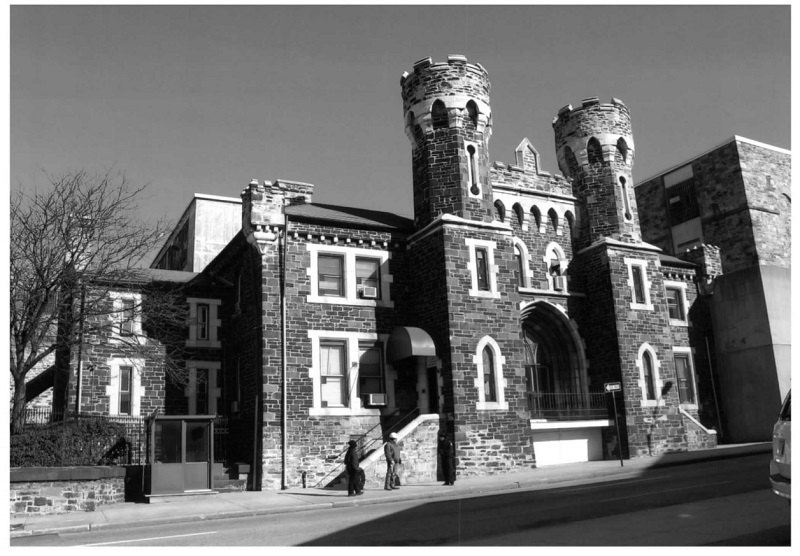Board Approves $27.5 Million to Demolish Vacant Jail Facilities in Baltimore

A jail in the center of Baltimore City, long faulted for poor conditions for inmates, will soon be torn down to make way for a therapeutic detention center.
The Maryland Board of Public Works voted 3-0 on Wednesday in favor of a $27.5 million contract to demolish 39 structures at the 8-acre campus that includes the closed portions of the Baltimore City Detention Center and the Metropolitan Transition Center, formerly known as the Maryland Penitentiary.
The detention center buildings to be demolished have been vacant since Gov. Lawrence J. Hogan Jr. (R) closed the facility in 2015.
“We finally brought an end to the long history of deplorable conditions at that facility,” Hogan said. “And the demolition of these buildings is going to make room for a therapeutic detention center.”
The Maryland Department of Public Safety and Correctional Services eventually plans to provide addiction treatment and mental health treatment at a new facility on the land.
Maryland Secretary of Public Safety Robert Green said the agency worked with the Maryland Historical Trust on the demolition plan. Some historical structures on the campus will remain, including a castle-like administration building, warden’s house and the Maryland Penitentiary’s administration tower.
Buildings that remain on the correctional campus were constructed between 1811 and 1995.
The castle building is one of the oldest structures on the site and has largely retained its original character over time. The 1859 jail – which was among the earliest large-scale jail complexes in the eastern United States – was extensively altered in 1959, removing character-defining features.
The city jail’s presence at the site dates back to 1801, and the Maryland Penitentiary was first built there in 1811.
The complex has been plagued by poor conditions and violence throughout history. The Baltimore Sun reported about poor conditions at the jail beginning in 1885, and repeated calls to replace the facility went unheeded for decades.
Buildings at the facility were infiltrated by the Mob of 1812, housed African-American slaves and abolitionists, then Confederate prisoners during the Civil War, and then dry-law violators during Prohibition.
The state took over the detention center in 1991, though poor conditions remained and were the subject of lawsuits.
In 2013, dozens of inmates and correctional officers affiliated with the Black Guerilla Family were charged with drug-smuggling and money laundering at the detention center and connected facilities.
A month before Hogan declared the facility closed in July 2015, the ACLU moved to reopen an earlier case alleging that the conditions and lack of resources at the detention center amounted to unconstitutional “cruel and unusual punishment.”
While strongly supporting the demolition effort, Treasurer Nancy Kopp (D) also asked officials to consider additional documentation of historical significance during the tear-down.
The board also heard briefly from Kelly Cross, president of the Old Goucher Community Association, who said officials should consider a multi-use revitalization project at the site, as opposed to a new detention facility.
“The notion of rebuilding more prison facilities in the center of Baltimore City runs counter to everything we know about how to restore and reconnect Baltimore’s neighborhoods,” Cross said, asking the board to consider putting the brakes on the proposal. “… It’s location in the center of the city sends out a symbolic message that crime and imprisonment are the defining features of the city. Let’s be clear, we don’t need a new prison in the center of Baltimore.”
Hogan responded: “I would just point out again that what we’re talking about is tearing down these old buildings so that we can provide drug treatment and mental health counseling, which is desperately needed, as opposed to just building a new jail facility,” he said.
The demolition contract with Parkville-based Towson Mechanical Inc. is expected to run about a year and a half.
Did someone forward this to you?
Get your own daily morning news roundup in your inbox. Free. Sign up here.




 Creative Commons Attribution
Creative Commons Attribution